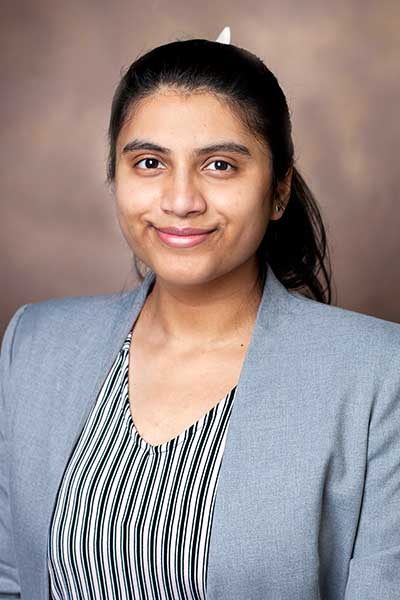Malvika Viswanathan
My research focuses on developing novel methods to quantify Chemical Exchange Saturation Transfer (CEST) MRI using machine learning and deep learning, and applying these methods to tumors, ischemic stroke, muscle diseases, and other pathologies.
My current projects include
- Developing a framework for partially synthetic data generation to train deep learning models for CEST MRI applications. These models are used to improve imaging in brain tumors, ischemic stroke, and muscle disorders such as ALS. This work has also been extended in our lab to improve the quantification of a newly identified nuclear Overhauser enhancement (NOE) signal at -1.6 ppm, which shows potential for detecting tumors and stroke. In addition, our lab works on enhancing the quality and SNR of CEST images using deep learning, with the aim of achieving more reliable quantification and enabling clinical translation.
- Applying advanced techniques such as double saturation power CEST (DSP-CEST) to enable rapid and specific quantification of CEST signals.
- Applying CEST MRI across different pathologies, with ongoing studies extending into Alzheimer's disease.
Publications:
Viswanathan M, Yin L, Kurmi Y, Zu Z. Machine learning-based amide proton transfer imaging using partially synthetic training data. Magn Reson Med. 2024; 91: 1908-1922. doi: 10.1002/mrm.29970
Viswanathan M, Yin L, Kurmi Y, Afzal A, Zu Z. Enhancing amide proton transfer imaging in ischemic stroke using a machine learning approach with partially synthetic data. NMR in Biomedicine. 2025; 38(1):e5277. doi:10.1002/nbm.5277
Viswanathan M, Kurmi Y, Zu Z. Nuclear Overhauser enhancement imaging at −1.6 ppm in rat brain at 4.7T. Magn Reson Med. 2024; 91: 615-629. doi: 10.1002/mrm.29896
Viswanathan M, Kurmi Y, Zu Z. A rapid method for phosphocreatine-weighted imaging in muscle using double saturation power-chemical exchange saturation transfer. NMR in Biomedicine. 2024; 37(4):e5089. doi:10.1002/nbm.5089
Kurmi Y, Viswanathan M, Zu Z. Enhancing SNR in CEST imaging: A deep learning approach with a denoising convolutional autoencoder. Magn Reson Med. 2024; 92: 2404-2419. doi: 10.1002/mrm.30228
Learning how to program pulse sequences with a focus on Chemical Exchange Saturation Transfer (CEST)
